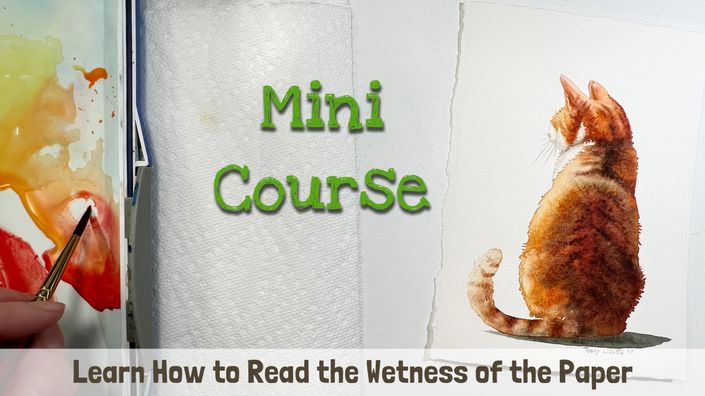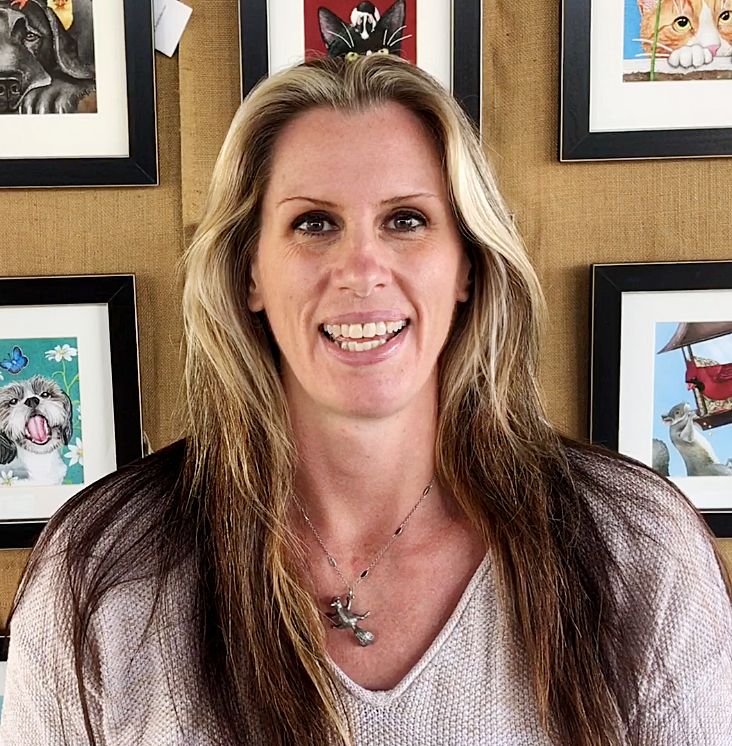
How to Paint an Orange Cat with Watercolors
Learn how to paint a cat with one layer using the wet-on-wet technique
This course is also available in The Art Academy.

Do you want to learn how to control the water in your watercolor paintings? Learn how to "read the wetness of the paper" and know exactly when to add or takeaway color from your painting.
Would you like to be able to create contrast in just one layer of paint? And not over work your painting.
Do you want to get better at thinking through your watercolor painting strategies? Learn how to create more with less brushstrokes!
There's a strategy to painting a watercolor in just one layer and once you understand it you can create stunning paintings without overworking them!

What You'll Learn
How to paint with the wet-on-wet technique
You will learn when to create a bloom or a bleed using the wet-on-wet technique to create the look of fur in just one layer of painting with watercolors!
How to "read the wetness of the paper"
When painting with watercolors it is essential to know how to read the wetness of the paper, and this takes practice, but first you need to know what to look for! I show you exactly what to do in your painting step by step. You will be surprised at how much can be accomplished when you let the water do the work for you!
The strategy of a one layer watercolor painting
Painting a watercolor in just one layer takes patients and discipline. You will learn how to think through your steps to reach your goal without overworking it. The best part is once you try this painting strategy you'll want to do it again and again! (It's super addicting.)
Who This Course Is For
- Beginner artists who want to develop their skills for painting with the wet on wet technique.
- Advanced artists who want to practice restraint when painting with watercolors.
- Artists who enjoy painting cats with watercolors.
- Artists who want to develop their ability to design their own original compositions.
Want to hear more on what you can expect from this course?
Watch the 1st module below and find out!

Your Instructor

Hi, I'm Tracy!
I'm a watercolor artist from Southern Maine, United States.
I have a passion for painting with watercolors, and teaching others the traditional fine art techniques that have been passed down to me.
I'm here to help you develop your own unique style, while learning how to draw, paint, and sell your art!
Want to learn more about me, and my journey to becoming a professional artist? Check out my About Page.
🤗 After you sign up you will be redirected to the course curriculum.
✍️ You get access to ALL the modules immediately! You also have forever access, and can go through each lesson, and watch each video as many times as you want.
🤩 This course comes with a downloadable reference images, and complete instructional painting videos supplying you with all the skills, and resources needed to successfully create your own painting from this mega mini course!
Frequently Asked Questions
This is the perfect project to practice if you're prone to overworking your paintings!